TOYOTA Landcruiser “70” Series
1990 “Enhancement of Engine Technology”/1990-New Engine• In 1990, the entire line of J-70 series was replaced with the latest developed engine series.
❶ The appearance of the model remains unchanged, the side pedals are changed to aluminum pedals, and the grille is changed to resin material to reduce the weight of the body.
❷ Adopt 4-wheel disc brake for the first time, add electronic differential lock, and axle head lock.
❸ The newly developed 1HZ engine replaces the 13B-T engine, and the 3L diesel engine is assembled for export models. “Engine Upgrading” • 1990 was the year when Toyota made the biggest breakthrough in engines.
❶ The appearance of PZJ-70 continues the soft-top short shaft of the old BJ-70, and only the brand-new 1PZ engine is installed.
❷ The shape of PZJ-70V continues the hard-top short shaft of the old BJ-70V, and only a brand-new 1PZ engine is installed.
❸ The shape of HZJ-73V continues the ERP top center shaft of the old BJ-73V, and is replaced with a newly developed 1HZ engine by Toyota. Different configurations have been added, such as the 73HV-ME version shown in the picture below, which is equipped with a front bumper with winch + anti-collision frame, four-spoke aluminum alloy wheels, automatic axle head clutch, etc.
❹ HZJ-77V and PZJ-77V are equipped with Toyota’s latest 1HZ/1PZ engine. This is the first time that the 7 series has launched a 4-door/4.5-door model, which has 3 rows of seats and can carry 8 people. Provide LX, ZX and other different configurations.
❺ The appearance of the FZJ-7 series is basically the same as the above versions. Most of them are left-hand drive versions, equipped with 4500cc, 1FZ gasoline engine, exported to the Middle East and Africa. • In 1991, another new series “Prado” was derived from the 70 series. The following are the engines used in this series.
❶ 2L -TE engine (2.4-litre OHC 234Nm/101Kw) This model adds an electronic control device to the 2L engine.
❷ 1KZ-TE engine (3.0-litre SOHC 287Nm/97kw) EFI turbocharged diesel engine.



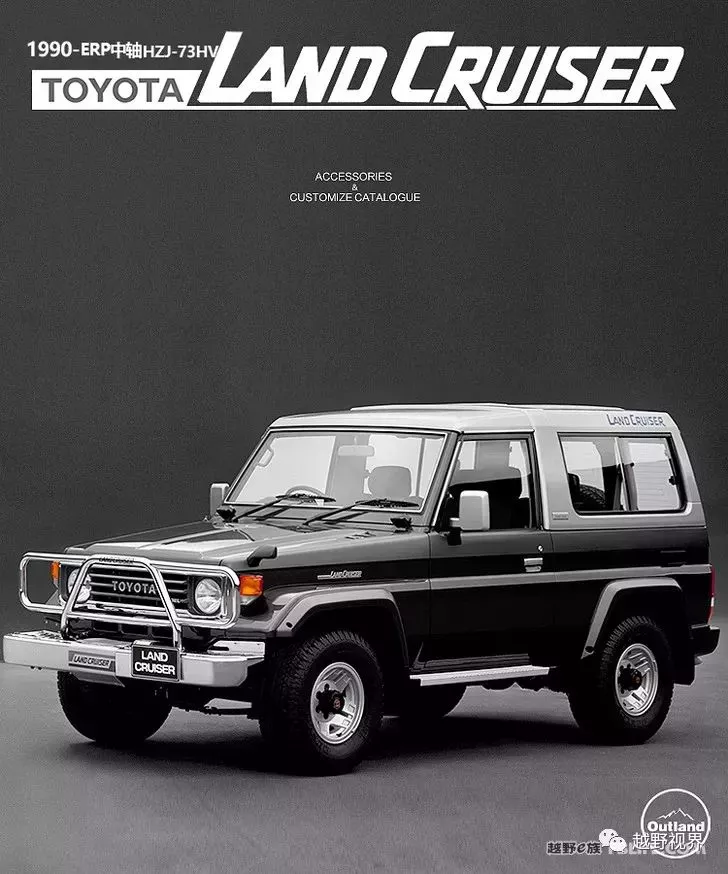
“Basic Model 1990-1994″/Short Shaft 70/70v Middle Shaft 73V• Change Record January 1990 ❶ 1PZ is equipped with R151F 5-speed manual transmission, replacing 2B 3B series engines. ❷ The cross section of the front axle housing has been changed from circular to square. ❸ The position of the rear shock absorber has been changed from staggered to parallel. Large-scale reinforcements are used for each pillar of the body. “Engine Replacement Record”/3B 13B-T was completely eliminated • In 1990, Toyota’s 7 series was equipped with the latest engine series ❶ 1PZ engine (3.4-litre OHC 115Ps/23.5kgm) to completely replace the 3B engine. The assembled models are 70, 70v, 77v. ❷ 1HZ type engine (4.2-litre OHC 135Ps/28.5kgm) replaces 13-B type engine. The assembly model is 73v, 77v, and the models equipped with this engine include the Japanese local version, the new Southwest, the European, the Middle East, and the African versions. ❸ 1FZ gasoline engine (4.5-litre-FEI) is assembled in models of 70, 70v, 73v, 77v, which are mainly assembled in models exported to the Middle East and Africa. (Replacing 3F engine in 1992, mainly used for export models) ❹ In 1993, 1KZ-T was used to replace 2L-T for export models, and 1KZ-TE was used to replace 2L-TE for Japanese local models.




• There is one cylinder difference between 1PZ and 1HZ, and the accessories are common and manufactured in the same production line.

1994 “Upgrade of European Emission Standards”/1994-New lllustration• In 1994, the 1PZ engine was eliminated due to problems such as environmental protection and low efficiency. ❶ The J-70 series eliminated 1PZ engines and replaced them with 1HZ turbocharged engines. The models after replacement are HZJ-70 / HZJ-70V. ❷ The J-77V series eliminated the 1PZ engine and only retained the HZJ-77V model. • In August 1996, the material of the cooling core of the water tank was changed from copper to aluminum. • Oil tank material changed from copper to plastic. The material of the fan cover is changed to resin, which is lighter in weight.

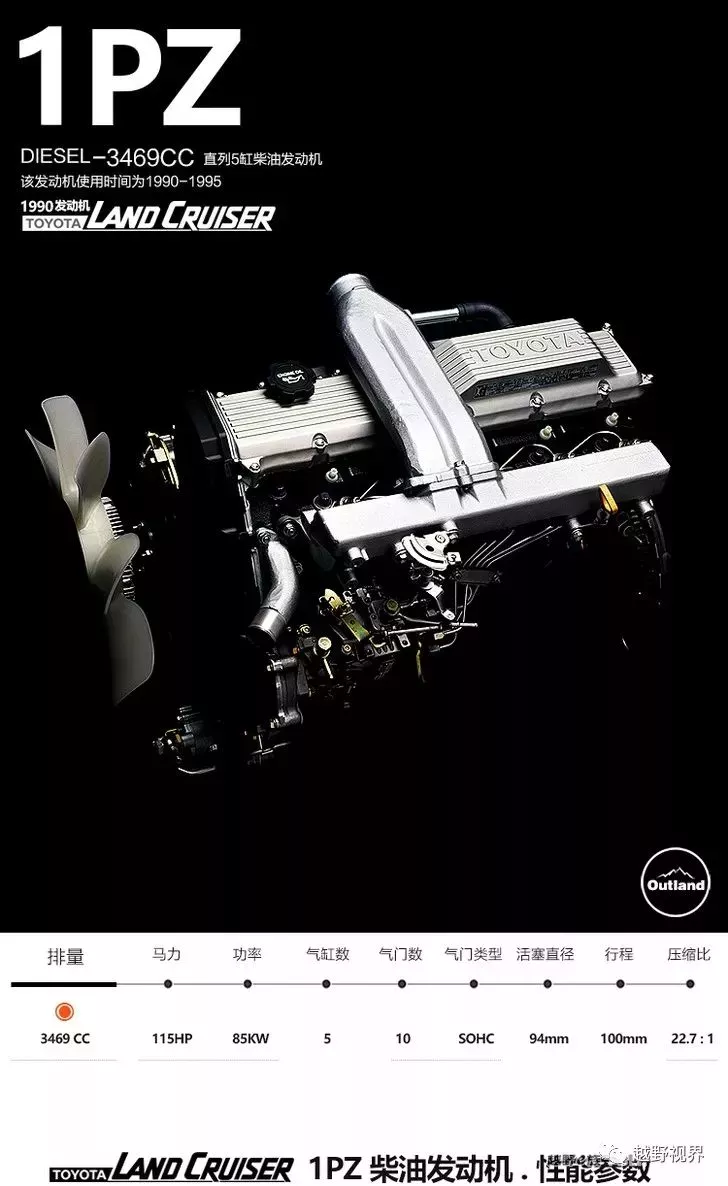
• The engine has been updated, but the appearance has not changed. Please refer to the 1984-1995 pictures for the appearance pictures! 1998 “Limited to 800 units, officially released 68 units” / PX10• This is the rarest model of a Land Cruiser. Some elements of the 40 series were used on the 70 series, known as PX10. The original plan was to release 800 units, but the Japanese economy was in recession and only 68 units were officially released. On the PX10 model, a 1HZ diesel engine is installed. This model is released by Toyota Modelista Corporation.
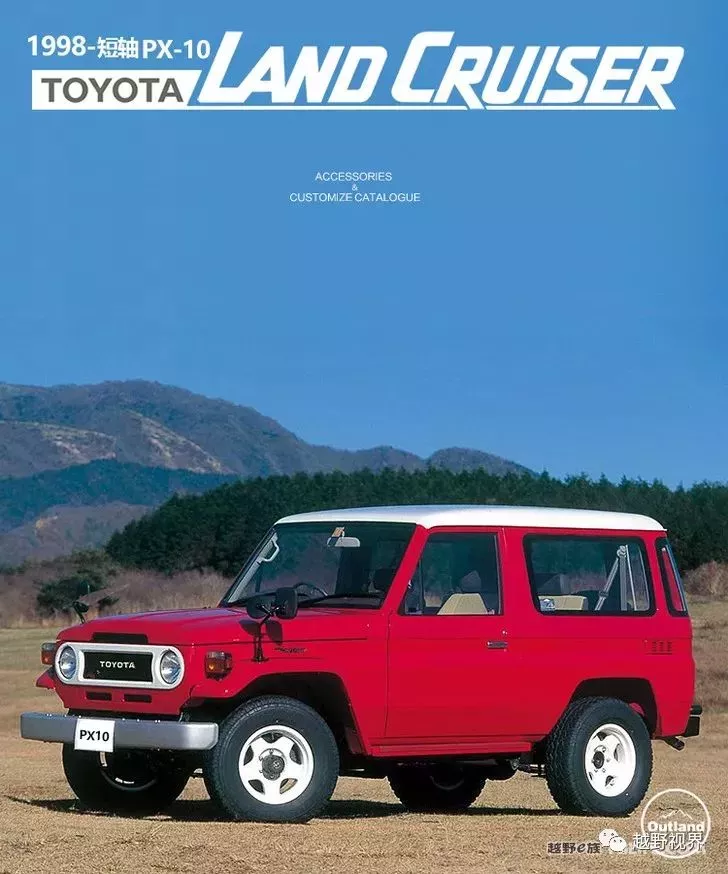
• Although the number of sales is small, the price of PX10 is not too high in the Japanese used car market! 1999 “Comprehensive upgrade of 70 series” • The front axle of the whole series was updated to coil spring suspension, and the transmission system was upgraded to improve durability. • The 70 version from 1999 to 2006 is the “most classic version” in the history of the 7 series! • The high-end version uses a brand new grille and alloy wheels. The hub is changed from 6 bolt wheels to 5 holes. The interior part is upgraded with a new steering wheel, a new interior, a new instrument panel, and an increased stereo system. • Equipped with 80 series new transmission H151F, equipped with standard oil tank and transfer case protection. • Vehicle voltage changed from 24V to 12V. • The front and rear hubs are changed from 6 holes to 5 holes bolts. Bolt diameter changed from M12X1.5 to M14X1.5, PCD changed from 139.5mm to 150mm. (The reason for the change in the number of screw holes is that it can be used in common with the LC100 hub, but it has caused great dissatisfaction in Australia and Africa, because the older models with 6 screw holes are more popular in these regions) • Dual-mode automatic hub lock.
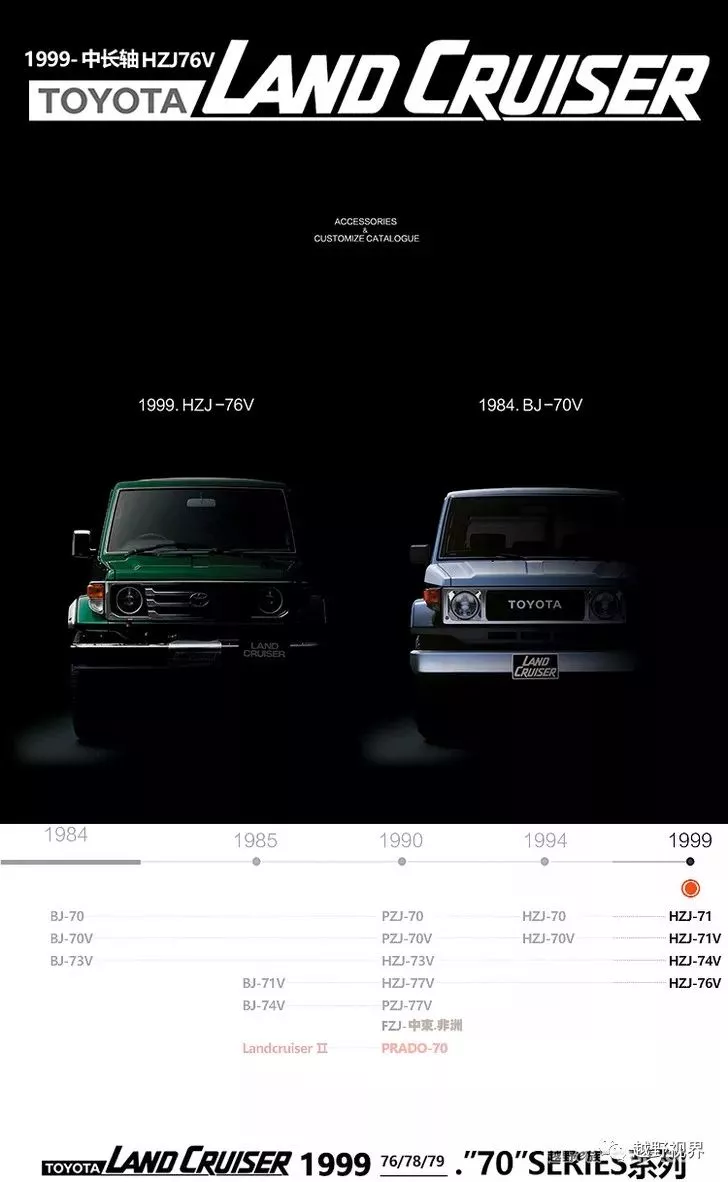

• HZJ/FZJ-76V can carry 7 people, has three rows of seats, and is designed with 5 doors. “The most classic 70 version” A New, More Powerful Landcruiser❶ The HZJ-70 series is upgraded to the HZJ/FZJ-71 series. ❷ HZJ-70V series is upgraded to HZJ/FZJ-71V series. ❸ HZJ-73V series is upgraded to HZJ/FZJ-74V series. ❹ HZJ/PZJ-77V series is upgraded to a new station wagon HZJ/FZJ-76V series. ❺ The 75 series is upgraded to 78/79 two new series • The 78 series has a wider internal design and larger space. The front and rear suspensions have been modified, retaining the solid axle, and using coil springs and light axles at the front, similar to the 80 series design, which improves road driving handling and only sacrifices a little off-road durability. The new independent name is 78 series. • The 79 series is derived from the upgraded size parameters of the 75 series “ute” pickup version.
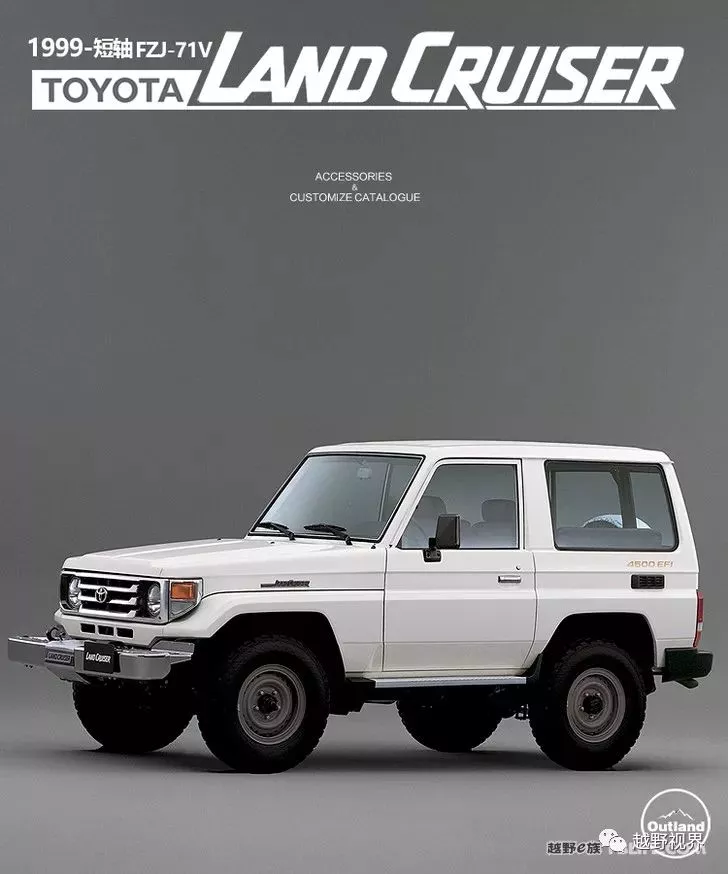
• FZJ-71V is replaced with a new front face, and the 4500 gasoline EFI version is exported to the Middle East.
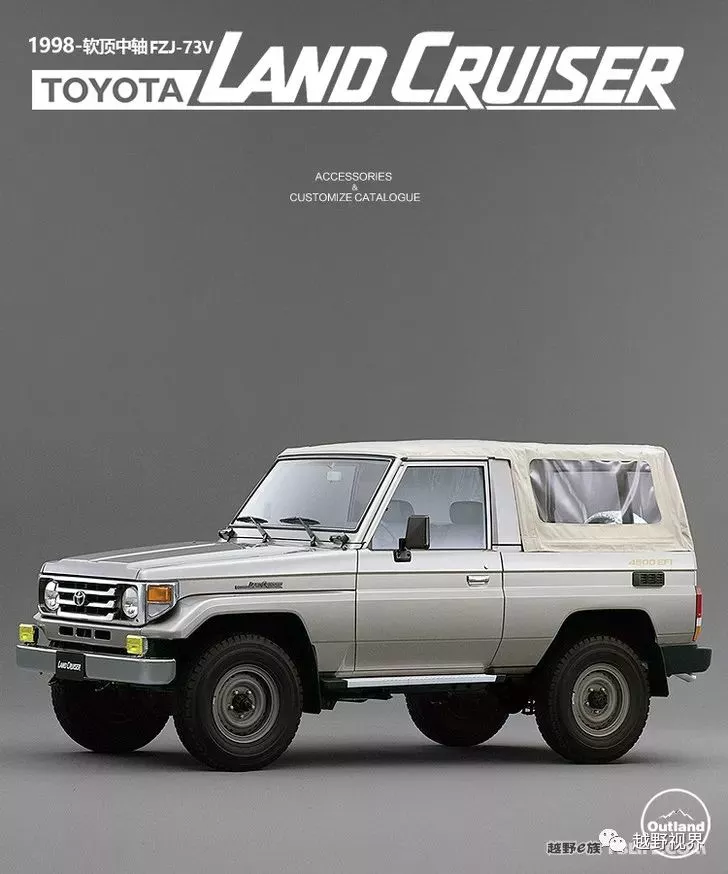
• The wheelbase of the 1999 FZJ-71 is shorter than the picture above, and the shape is exactly the same.
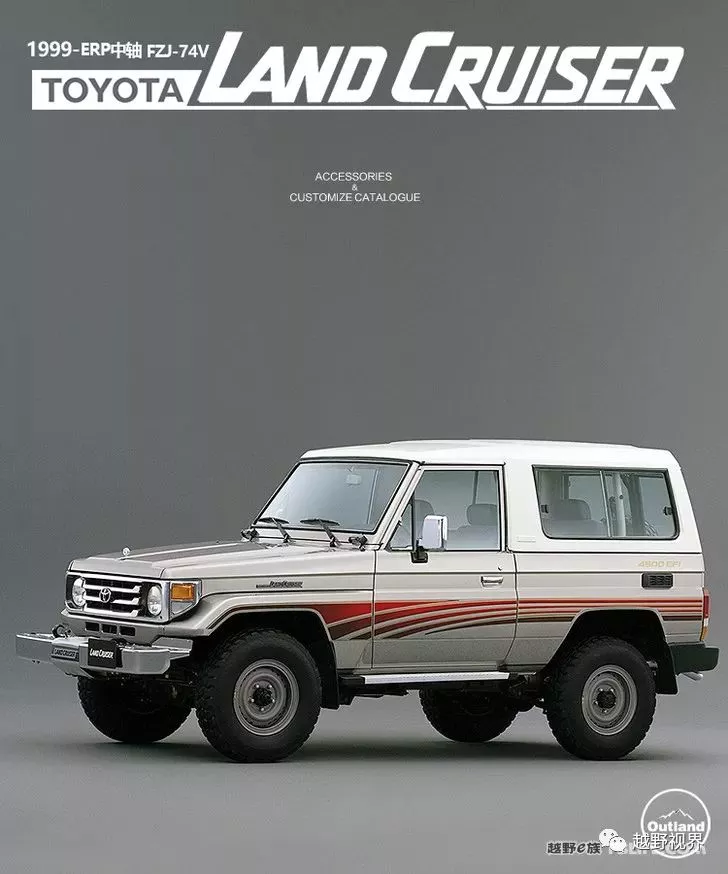
• Some models are equipped with a winch, cast iron wheels + narrow tires (Middle East version)
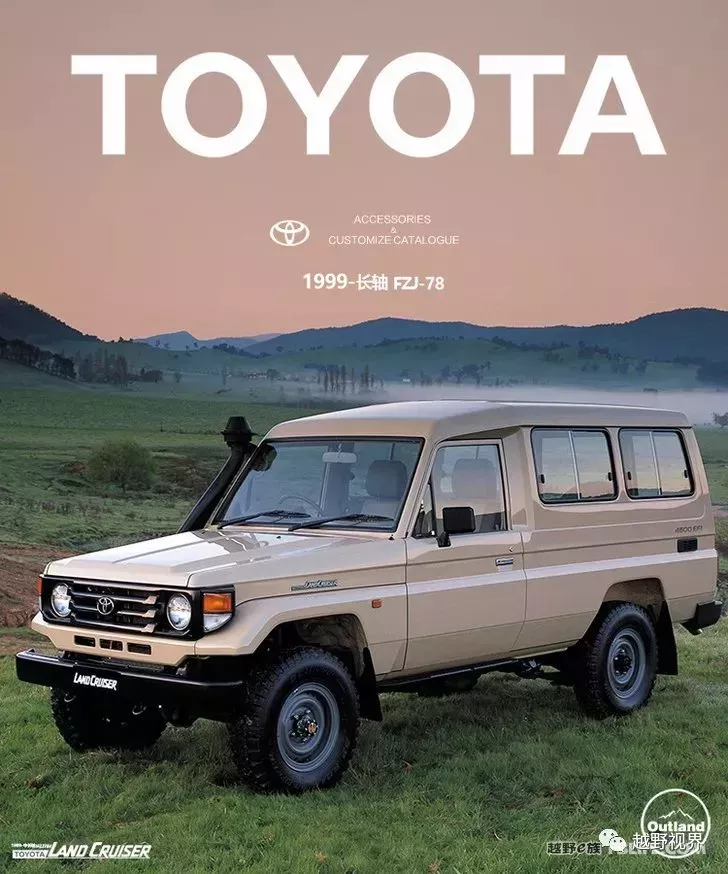
• FZJ-78 factory models are equipped with wading hoses as standard, and the shape is almost the same as that of 75. The main difference is the difference in size. 75 uses steel plates, and 78 uses springs

• This picture shows the new FZJ-79 high-end model. Five-spoke alloy wheels + wheel eyebrows
(The content comes from the off-road e-family land patrol 7 series)




